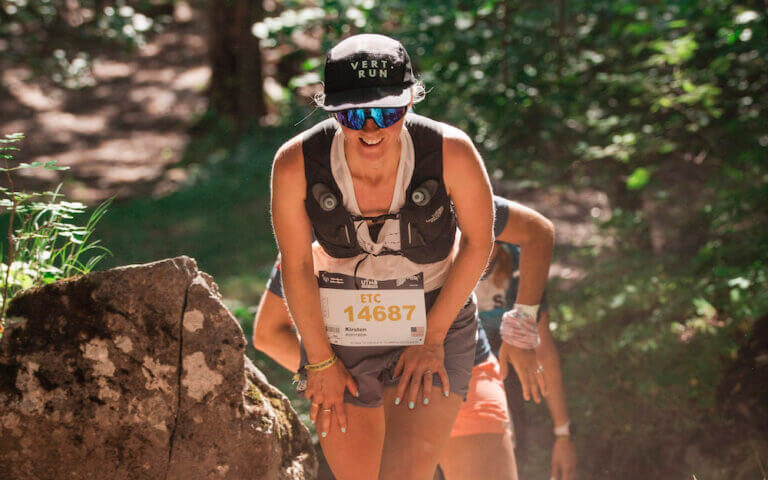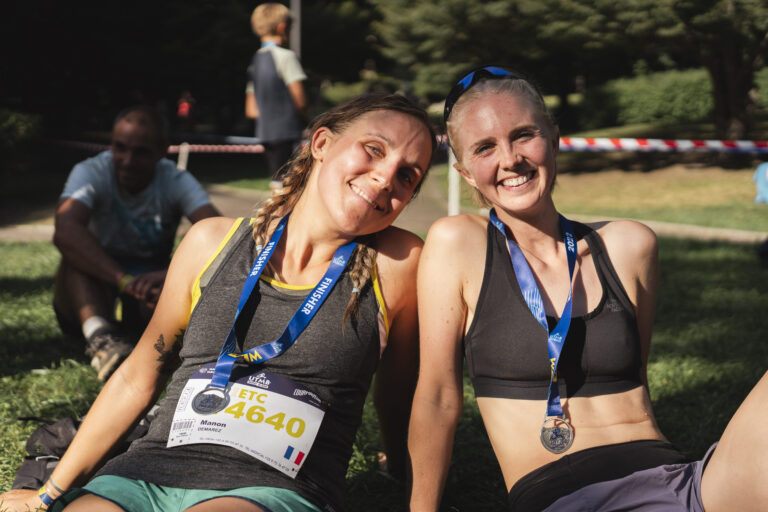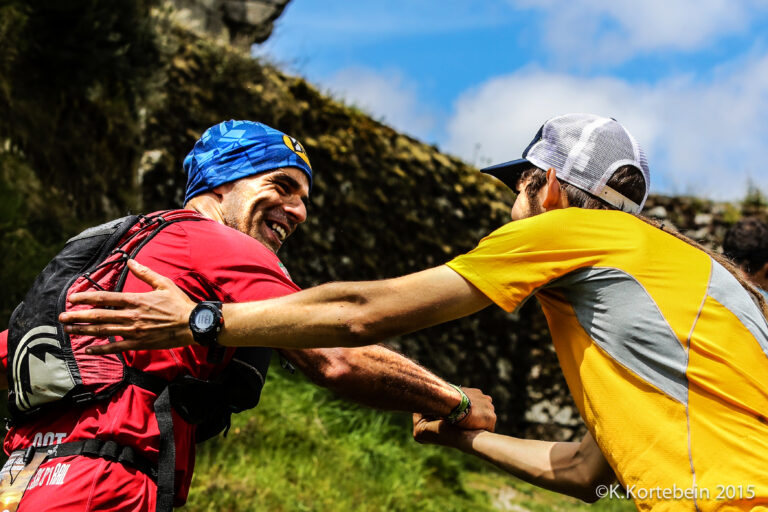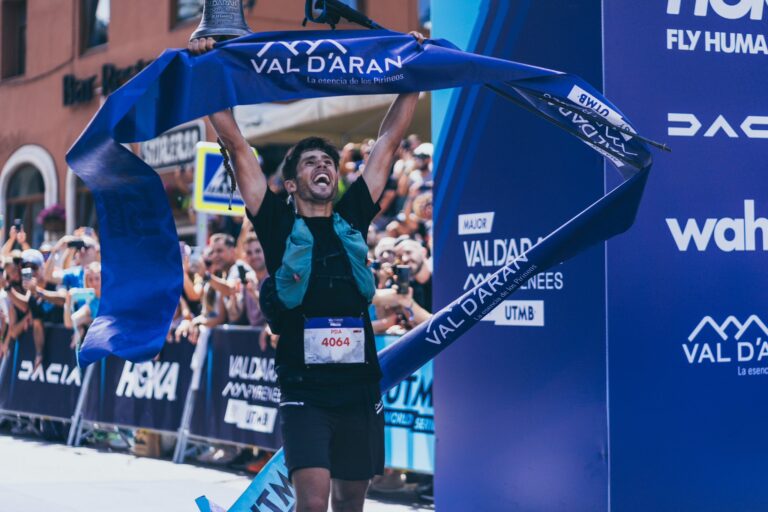This new “Corona-reality” it’s not easy for anyone–and as a trail or ultrarunner, this year also looks a lot different than we’re used to. Races have always been “on the table,” and lots of us have taken them for granted…but even more than that, we’re realizing just how much we as trail runners have leaned on races for motivation, structure and goal-setting. This isn’t a bad thing–trail races are a hugely important part of our community, and race directors often pour their heart and soul into putting on events that don’t have huge financial returns for them–but one thing we’ve definitely learned throughout 2020 so far is to reconnect with the mountains and trails…and that testing ourselves doesn’t necessarily = racing.
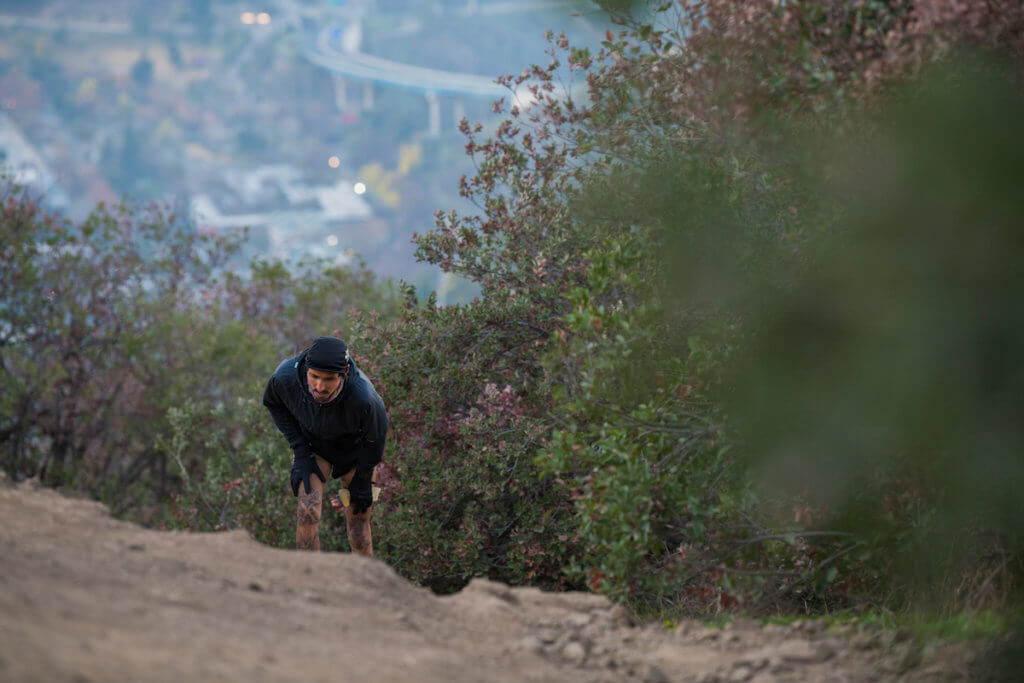
So before we dive into this ultimate guide to creating your own Long Trail Adventure, we challenge you (and ourselves) to reframe the idea of a goal, of success, or of adventure. Let’s make this year about exploring what’s around us, pushing our personal limits, and reconnecting with why we trail run in the first place. Let’s get cracking.
Firstly: what do we mean by Long Trail Adventure?
Especially since travel is limited this year, we’re talking about redefining our idea of adventure and exploration.
Exploration can be found anywhere, anytime. Exploring, in its most simple definition, is about discovering what’s around you. You don’t need to drive or fly far to have an epic adventure. Actually, some of the greatest adventures start and/or end at home. (For example: Rickey gates running every single street in San Francisco…for me, that is the definition of adventure, plain and simple.)
But don’t worry, I’m not about to tell you to run every single street in your hometown…or to run up and down the 27 floors of your city apartment building 103 times. (Like Vert athlete Pepe Sciraffia did during the Chilean lockdown in July 2020, hitting 9,009+ meters of elevation gain. Seriously.)
I’m talking about redefining, and then creating your own outdoor adventure. In a “normal,” year we tend to go from race to race and never slow down to really see what’s around us and the possibilities that might be just outside our door.
Since this is a mostly race-free year, let’s create our own epic adventure. Here–based on my own experience as an athlete for The North Face and native of Patagonia, Chile where I’ve got lots of practice doing personal adventures in a region I’m lucky to have grown up in–I’ll explain how.

Step 1: define “The Why.”
“The Why” is going to be really important for this adventure. The Why will be your drive. Remember that you will be out there for many hours. I can assure you that your legs will get very tired and your mind will start to play games to make you quit, so the stronger your Why, the higher your chances of both finishing and really having a great adventure.
Your Why will also be a great motivator during your training. It’ll keep you driven on hard days, and will help you stay consistent each week. When you’re signed up for a trail race, that’s usually your default Why. But this year, we’ve got to dig deeper and reconnect with our real Why.
For some of you, the route itself might be your Why. Maybe it’s a route you’ve never run before, but have always wanted to–or a route that holds personal, historical or cultural significance.
For others of you, your Why might be the satisfaction of completing something epic. Or completing something epic, but solo. Maybe it’s about running for more hours at a time than you ever have, or about running a longer distance than you ever have. Or, clocking more elevation gain than you ever have in one go.
Or maybe you want to run your Long Trail Adventure on a date that holds special meaning to you–like Vert athlete Alan Scherer, training for his first 50k which he’ll run to celebrate two years sober.
Maybe you want to run a 35-mile ultra distance on your 35th birthday. Or maybe you want to run a long ridge in some local mountains. Or maybe you want to scale and descend every mountain in your local ski area. Or maybe you don’t live near the mountains, and you’ve always wondered if you could run 50 miles on flat trail in one go. (If you live in a flat place and need some inspiration, look no further than Coree Woltering’s FKT of the Ice Age Trail.)
The truth is that each of us has a different Why. We all come from different parts of the world, have different pasts and different things we’ve always wondered if we were capable of. But the one thing we all share is that connecting with new places and confronting something unknown are both great sources of inspiration. It’s kind of how you feel at the start of an important race–heading into the unknown–but even more epic because here, you’re on your own. You’re testing your skills in the real world…so it’s the real deal.

Step 2: Find or create your route.
Your route is going to be the core of your adventure. Well, in a lot of ways, the route can often be the adventure itself. To choose the right route for you, think about these points:
- It should be epic, inspiring, motivating and/or meaningful to you. (This goes hand in hand with the Why we just talked about.)
- It should be challenging, but not impossible. Like if you’re an experienced 100 mile runner, you can choose a 100 mile or 200k route (or even more) if you feel confident you can train well for it. But if your longest experience is a 50k, then try to take a step in between: like, maybe shoot for a 50 mile route before jumping into an extremely long one.
- Keep it simple and if possible, try to choose something close to home. (Great example is Emelie Forsberg’s FKT of the Kungsleden Trail in her Swedish homeland.)
- Think about the logistics (How accessible is this route? Are there any “emergency exits,” or places I could find help in case things go wrong? Is it close to home? Will I have cell service? Will I be able to find water along the way, or have to carry everything/get crewed?)
- Do you want to get crewed during the route (aka get assistance from family/friends along the way?) If so, is it possible to access you at some points, either with a car or by hiking?
Step 3: choose your adventure style.

A point-to-point route:
A point-to-point challenge is often one of the best and most motivating adventure styles, because you get to see how the landscape changes, you don’t repeat any sections, and because you have a specific endpoint.
There are two ways you can do a point-to-point route:
- Connect two meaningful places (I call this a “long commute.”) This can be a route that connects two towns that are meaningful to you, or an adventure that finishes at home (so you have a tangible finish line.) Or, you can start at home and finish at an epic location (from/to home adventures are amazing, and actually very meaningful and environmentally friendly).
- An epic traverse: Like crossing a national/state park, a region, or a mountain range. Good examples of this are Ryan Sandes’ new world record on the Drankensberg Grand Traverse, or Kilian Jornet’s traverse of the Pyrenees.
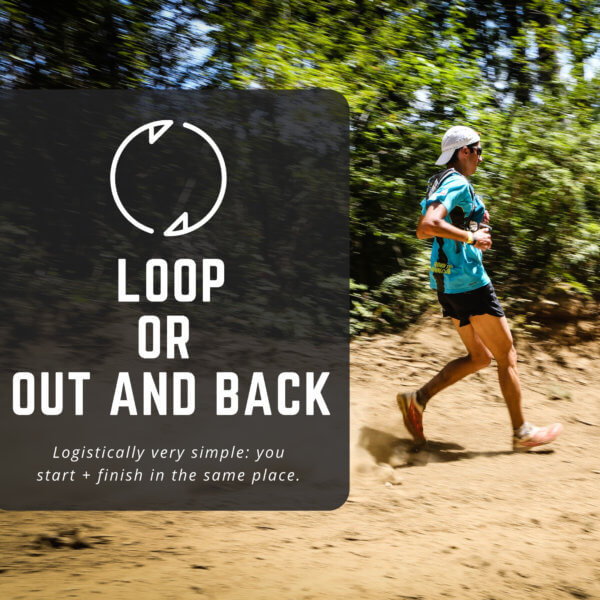
A loop route (or “out and back”):
A route that starts and finishes in the same place. Normally on these types of routes, the goal is of course to try to complete the route and potentially find your personal FKT (fastest known time). The good thing about a loop route is that logistically it’s more simple, since you start and finish in the same place. A great example of an out and back route is the Rim to Rim to Rim in the Grand Canyon, a record which is held by Jim Walmsley. Another amazing loop route example is the “Tahoe Rim Trail,” recently run by Magda Boulet.

Multi-loop route:
This is a great first approach to an epic adventure. If your goal is to run your first Ultramarathon distance and become an Ultra runner but there are no races happening, well, this is a really great replacement. Set up an aid station at mile 0, define a loop that’s inspiring and that you like (it can even be your normal training route), choose an amount of time you want to finish as your goal, and go for it. You can be looking to complete a specific distance, elevation gain, or even just a goal number of loops of the route. This option is really good for running your first ultra especially because you can have great support at your own personal aid station, you can have friends helping you out with the pacing and hanging out to cheer you on, etc…it’s really an all-around perfect way to have an epic adventure on your doorstep. (Or, if you’re still in lockdown and need some inspiration: check out Ryan Sandes running around his house 1,455 times to complete a 100 mile challenge during South Africa’s lockdown. Or Mike Wardian running 63 laps around his house to complete 262 miles and win the “Quarantine Backyard Ultra”.) Honesty, this pretty much leaves us with no excuse for finding the drive to do a personal ultra or challenge, right? Also, a final note: even if the challenge is on your normal training route, believe me…after a few laps and once you enter the unknown, you’ll really find a whole new level of challenge and things will start to become more epic every minute.
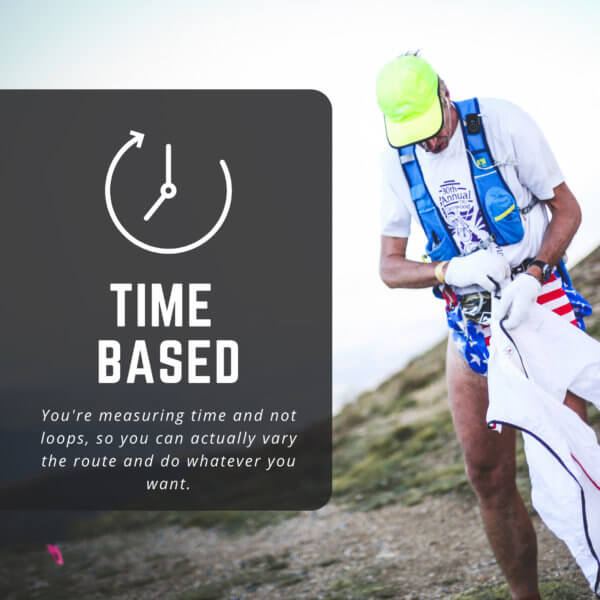
Time based:
Well, this one is very simple: just define a time and go for it. Like the classic 12, 24, 48 hour track races…but not necessarily on a track. These types of adventures are pretty similar to the multi-loop ones. The difference is that you’re measuring time and not loops, so you can actually vary the route and do whatever you want. All you have to do is just keep moving for the whole time of your goal. Try to challenge yourself here a little: if the longest time you’ve ever run is 7 hours, maybe go for a 10 hour challenge. If you’ve run 12 hours, try for 18, or even 24…
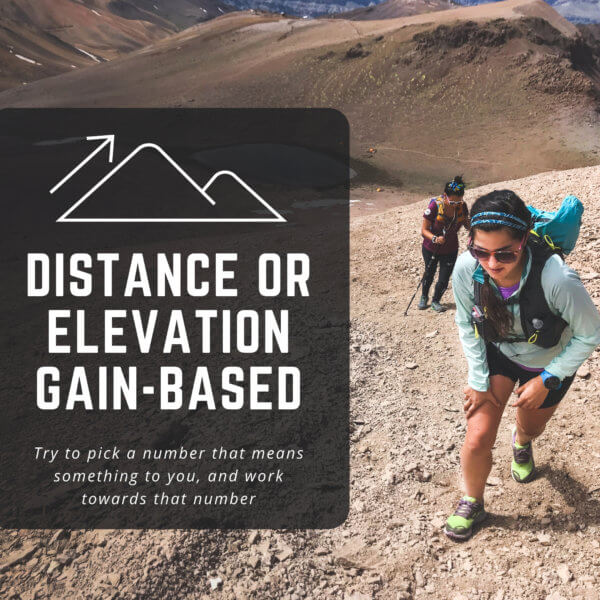
Distance or elevation gain-based:
These are some of the most common challenges lately for us ultra runners or trail runners…especially the elevation gain based challenge. Thanks to the folks behind Everesting, which started to get popular even before COVID and has really exploded since then, lots of cyclists and ultrarunners have taken on the challenge of repeating a segment until hitting 8,848 meters of elevation gain–equivalent to the height of Everest. Again, it’s kind of similar to a multi-loop route…but, it doesn’t have to be. You can also just go out on your own and try to complete a distance or elevation gain without repeating a loop. A tip for doing a distance or elevation-gain challenge: try to pick a number that means something to you, and work towards that number like we talked about at the beginning of this article. (A birthday, a significant number for you, etc.)
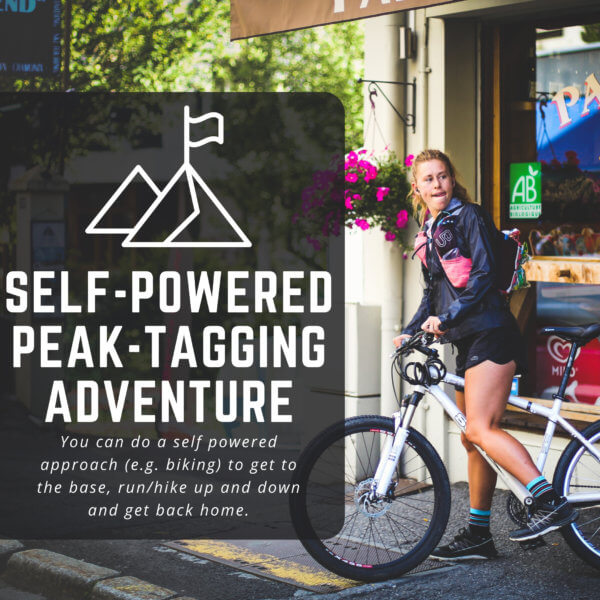
Bonus: Self-powered peak-tagging adventure:
One of my favorites. After talking so much about loops and numbers and the distances and the hours… This is what I really find inspiring. Maybe you don’t live that close to that mountain that inspires you, but have you ever thought about tagging the peak and getting there self-powered, i.e. without a car or plane? Well, here it’s really about getting creative. You can do a self powered approach, biking for example, and get to the base, run/hike up and down and get back home. That’s as simple as it gets, but hey, you can get even more creative like Joe Grant who scaled all of Colorado’s 14ers in a month, totally self-powered. You don’t need to disappear for a month, but yes you can have an epic weekend and tag all the mountains around your own town for example.
Finally, if you need inspiration to find an amazing route, just go check out Fastest Know Time and start exploring what’s around you.
Train like a pro
For $6/ week
Step 4: Set your goal.
After you’ve officially chosen your route, it’s time to set your goal. Since we’ve already talked about this, we’ll keep it simple: Step 4 is to set your goal. This can be time, distance, elevation gain, etc.
If you aren’t sure where to start, a good rule of thumb is to base your goal off of your previous races or performances. Like if you’ve run 50 miles in 10 hours and want to go for a 100 miler
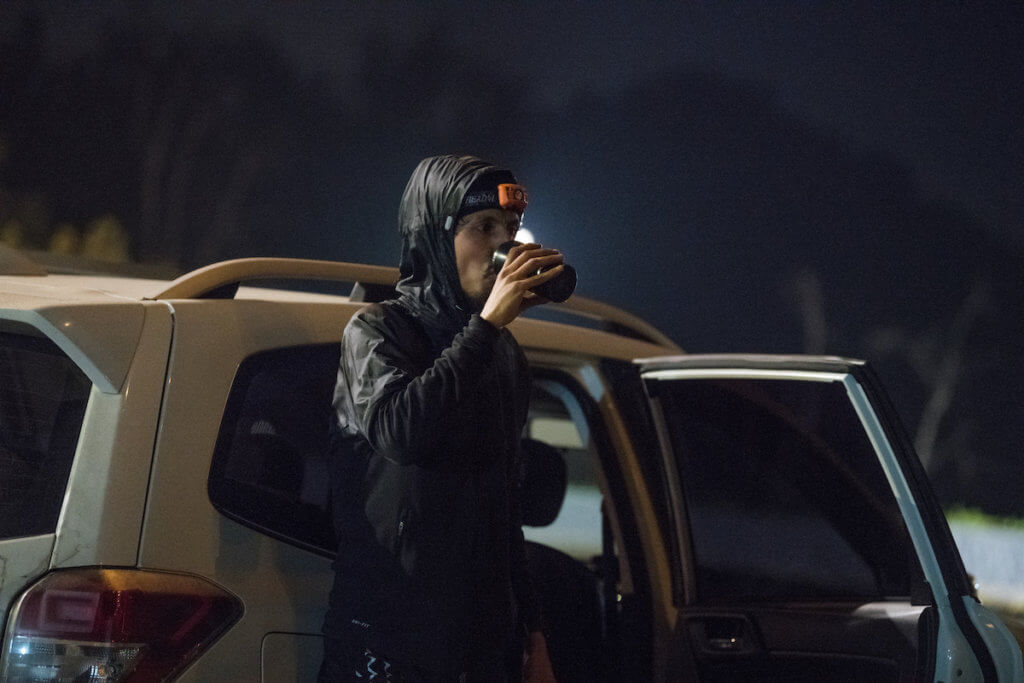
Step 5: Pick a date.
Once you know your route (Step 3) and your goal (Step 4,) it’s all about Step 5: picking a date. Here, you’ll want to choose a date (or range of dates depending if the weather is tough.) When doing so, make sure you:
- Check out the weather on that date or dates for past years. This will give you an idea of the conditions you can expect.
- Don’t limit yourself to one specific date; instead, try to have a Plan A, Plan B and maybe even Plan C. You never know how your training will go, if you’ll need more time to train or to recover, or if the weather will be horrible on the first date you chose. In general, many things can go differently than you plan and that’s ok. We just need to be adaptable.
- Make sure you have enough time to really prepare, and don’t underestimate training. I will always recommend a 12-week training block for a long challenge (6+ hours.) We’ll talk about this more in Step 6, but if you’re flexible with your date, you can actually choose your date based on your training schedule.
After you choose your route, goal and date now it’s time to get moving–and for this, the first step is training.

Step 6: Start training.
So like I just mentioned, sometimes you can even choose your date based on your training. The idea is that you should train for this adventure just like you would for a race. That means following a good training plan, tapering before your adventure, and prepping and practicing your logistics (like nutrition, gear, etc.) for your long adventure. I know that training isn’t always the most exciting part of an adventure, but trust me: if you train correctly and prep the way you should, you’re going to enjoy your epic day out way more.
Here are a few tips from Ryan Sandes in his Vert.run ‘Long Adventure’ training plan to follow during your training:
Mimic the route you will be doing (elevation gain vs kms relation):
So you can feel very comfortable during your adventure. If you will be doing a 50 miler with 13,000 feet of elevation gain (80km with 4k m+) then try to hit that vertical gain/distance relation on a weekly basis, during your training. You don’t have to run all the time 50 miles with 13k ft of elevation gain, just be as consistent as you can with that relation, and even more when you’re getting closer to your adventure.
Train with “similar conditions” to avoid surprises:
Besides the relation between distance and elevation gain, there are many other factors that play an important role in these adventures. For example, if you’re doing a self supported adventure, you will probably be carrying a heavy backpack with all the things you may need during the adventure. So try to train with a similar (ideally the same) backpack and test out the things you will be carrying during the adventure. Also try to train (not always, but sometimes) at similar hours to the hours you will be expecting to be running during the challenge. You don’t need to run at 3 AM if you know that you will be running at that time during the challenge, but maybe try to have some evening runs, morning runs, etc…vary the schedule to get your body used to it.
Checkout our “Ultimate 50k training guide” for more tips and a complete description on how to structure your training.
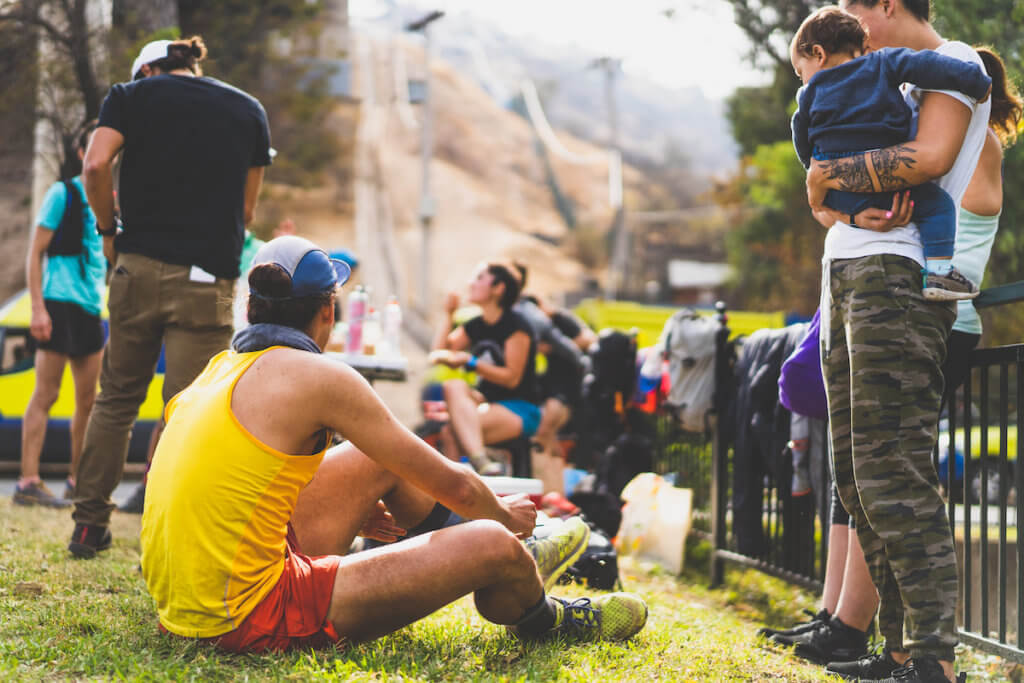
Practice your nutrition:
(Quote from the SCMP article How to train for a FKT or adventure run when all your races get cancelled with Ryan Sandes)
“Make sure you are taking in the calories. Some runners take a lot less than they would at the end of a long race or run, but suddenly you’re trying to eat at the end of a long run and you realise your body can’t take them in. So practice eating as you train. In fact, practice with all your gear that you intend to use so you get used to carrying it and know what kit is useful for what section of the run.”
If you want some guidance for your adventure:
Ryan Sandes has built a 12-week training program with Vert specifically for this.
Training for a Long Adventure in the mountains. In his program, he designed each of the workouts to get you fit and ready to tackle a mountain adventure between 100k and 100 miles. His plan’s also got a series of weekly video tips where he teaches you how to:
- Plan your route.
- How and why practice nutrition during training.
- How to plan your equipment and gear.
- How to stay motivated during the training process
Basically the way Ryan’s plan (and all our training plans) work is that the workouts auto-adapt to your level…and then you’re paired with a Vert.run coach who guides you through the plan, and gives you training feedback 2x per week.
A final note: be smart, be cautious.
I don’t want to discourage you at all, but it’s important to keep perspective, and even more so when we’re talking about a big or long adventure in the mountains.
Remember this: whatever you get yourself into, you’ve also got to get yourself out of.. Don’t try to do an FKT of a mountain that you don’t know if you can climb, for example. Don’t choose a route with technical terrain that you’ve never seen before. Be aware that you can be in the middle of the run and have a problem that will force you to exit the adventure–and that because of this, you will always need to know where you are, and how to get out safely. So my final words for you are:
- Have a plan A,B,C and prepare/be ready for for potential problems or for when things go wrong
- Understand the route, landscape and terrain. You need to know what you’re getting into.
- Be sure to know where you are at all times. Use GPS trackers, maps, compass (learn how to use it, really doesn’t hurt.) Try to scout the route beforehand…maybe not the whole thing, but at least some of the more difficult sections.
- Always have a reserve of extra energy. Be well trained to know your limits and abilities, and to always be enough in control of your energy to get yourself out of wherever you are. This is really key.



